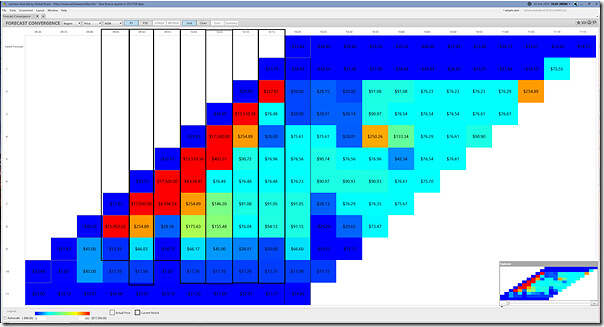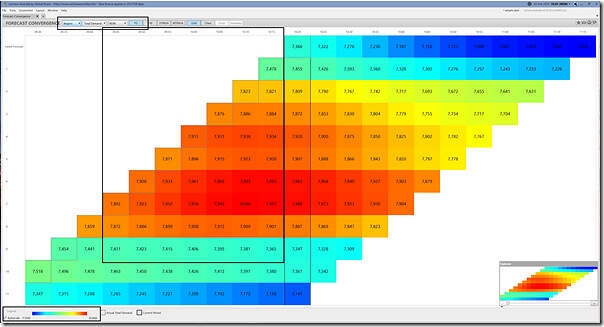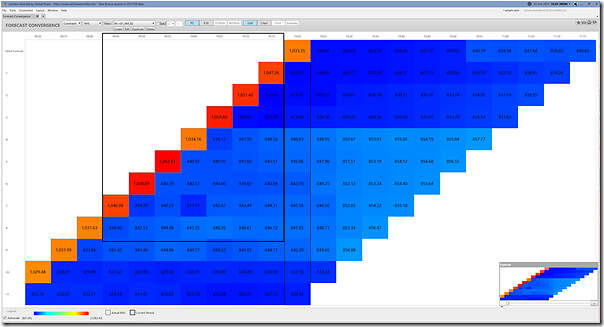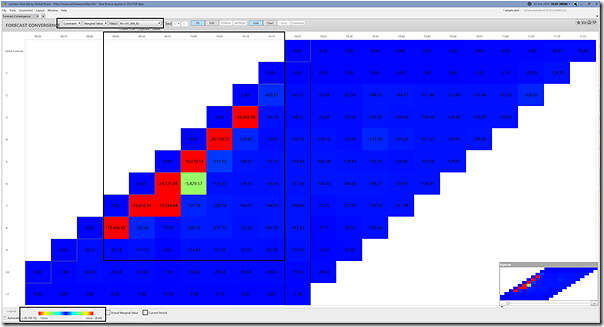Apologies to readers that this one’s going to be a bit* vague.
* perhaps very vague, depending on your perspective.
One of our clients have pointed us at these forecasts for the dispatch intervals 09:45 to 10:15 (NEM time) for the NSW region earlier in the day today (Thursday 20th February 2025):
Remembering to ‘look up these verticals’ in the ‘Forecast Convergence’ widget in ez2view, we see the immediately preceding P5 predispatch projections/forecasts** showed a possibility of sky-high prices in NSW, but these did not materialise (and in fact were all below $0/MWh).
** different people use different terms, but it is one more reminder of that article I’m endeavouring to write at some point, titled ‘Are AEMO’s forecasts accurate?’. No, not a trick question … or is it?
Without falling down that rabbit hole, I’ll quickly offer two other representations of the same ‘Forecast Convergence’ widget in ez2view focused on the same time range and just with two*** different data points…
*** though readers should acknowledge that this is a far from complete picture.
Possible contributing factor #1) NSW ‘Market Demand’
The second image flips to look at ‘Market Demand’ in the NSW region:
So there’s clearly a step change up in NSW ‘Market Demand’ (that’s enough to trigger that alert we’ve been seeing a lot of recently!) and then a step change down in NSW ‘Market Demand’ as well.
Possible contributing factor #2) The ‘N>>81_964_82’ constraint equation
The third image relates to the ‘N>>81_964_82’ constraint equation ***, and in particular the RHS of this particular constraint …
Note that the RHS (at least through this period) has been forecast to be substantially lower than it’s turned out to be at the point of dispatch … which is particularly relevant given the form of this constraint equation is LHS <= RHS.
No time to dwell on this particular constraint equation other than to say:
(a) It’s part of the ‘N-LDNC_81’ constraint set
(b) Which relates to an outage of ‘Line 81’ between Liddell and Newcastle.
The fourth image relates to same constraint, just looks at the Marginal Value of the constraint:






Leave a comment